It is estimated that more than a million animals and plants are in danger of extinction worldwide, including endangered plants in California and all over the United States.
Although the reasons for the danger of extinction are mainly natural, the hand of man has also actively participated in the disappearance of these endangered species of plants.
Pests, forest fires, and other natural disasters are among the causes of the endangered plants of the flora world.
Likewise, industrial activity and the expansion of cities have generated extinct plants and, of course, many others that are threatened today on the endangered plant list.
Reasons why plants become endangered
There are many reasons why plants become endangered. Some of the top reasons include:
- Pests are one of the top reasons why plants become endangered. Insects, rodents, and other animals can damage or destroy a plant, making it more susceptible to disease.
- The disease can also kill a plant, making it vulnerable to pests and other threats. Many diseases are spread through contact with other plants and can easily travel from plant to plant in a garden or field.
- Poor soil quality, climate change, and other environmental factors can also kill plants. These threats are often difficult for plants to recover from, putting them at risk of extinction. Unlike animal species, climate change is not the main reason; the responsibility is in man’s hands.
- Humans are also responsible for many cases of plant endangerment. Deforestation, development, and other human activities can destroy or damage habitats, making it difficult for plants to survive. In some cases, humans also introduce new pests and diseases to an area, which can devastate the local plant population.
Advances in agriculture and urbanization and the continuous use of pesticides destroy habitats. The figures for habitat loss are frightening: last year, 2.3 million square kilometers of forests were cut down, or almost five times the area of Spain.
In Europe and the United States, spaces are lost to intensive agriculture, so endangered plants will always exist in the US. On the Atlantic coast of South America, thousands of hectares of forests are burned, as is in Madagascar.
In Indonesia, the same practice is used to plant palm trees for producing palm oil.
How you can help fight habitat loss
Habitat loss is a serious problem that is having devastating effects on our natural habitat. While there are many steps that we can take as individuals to protect our planet and fight habitat loss, below are some of the most important ones.
- One of the best ways to combat habitat loss is to reduce your carbon footprint. You can do this in various ways, from driving less often to saving energy at home.
- Reducing your reliance on fossil fuels will help minimize greenhouse gas emissions, which contribute to global warming and can destroy natural habitats.
- Another key step you can take is supporting organizations that advocate for environmental protection. This might take the form of volunteering or donating money, but we must work together to save our vulnerable habitats from further harm.
- In addition to these individual actions, it’s also important that we become more informed about the causes and impacts of habitat loss. We need to learn more about what’s happening locally and globally to make informed decisions and hold our leaders accountable for their actions.
By taking all of these steps, whether big or small, each of us has the power to help preserve our planet for future generations.
How are endangered plant species protected?
Multiple different ways endangered plant species can be protected from becoming completely extinct.
- At the most fundamental level, efforts are often made to preserve these endangered plants’ habitats and reduce or eliminate human activities that could damage or disrupt them.
- Conservationists work to identify and study these vulnerable species, often creating detailed biological profiles for each. These studies help inform strategies for protecting individuals and preserving habitat areas where groups of endangered plants live.
- Additionally, many conservation organizations work directly with government entities to create legislation that protects these sensitive species. An example of a government entity is the U.S. Fish and Wildlife Service.
- Finally, public education programs help to raise awareness about the importance of preserving the Earth’s precious flora, encouraging the public to take action in their communities.
- Ultimately, the goal of protecting endangered plant species is an ongoing effort that requires cooperation from diverse stakeholders across multiple sectors. Through continued collaboration and innovation, we can work towards a more sustainable future that protects and preserves vital plant biodiversity for generations.
Endangered Plant Species Around the World
1. Prickly Cica

Also known as Encephalartos altensteinii, these cycads from South Africa are very slow-growing and are endangered plants. They can grow up to five to seven meters in height.
Due to their wind resistance, they are often used as ornamental plants in large gardens and parks, especially on the sea coast.
Although it can live for 300 years in its land of origin, it is beginning to disappear due to the loss of its natural growth zones. In addition, it is sneakily extracted for medicinal purposes.
See Related: Best Outdoor Jobs | Careers to Consider for Outdoor Lovers
2. Phalaenopsis Micholitzii

We will mention one of the endangered plants in the tundra, Phalaenopsis micholitzii, which is part of the Orchidaceae family and is better known as orchids. This species from the kingdom of nature plant is native to the Philippines.
However, it is currently in critical danger of disappearing. This type of orchid is normally found in humid forests with tropical climates.
Its beautiful structure and natural appeal make it a threatened species due to overcollection and the loss of habitat it has been exposed to in recent years.
3. Attraylis Preauxiana

This shrub is widely distributed in the Canary Islands, among the plant species in danger of extinction.
Although it barely reaches a height of 30 centimeters, its characteristic leaves, with highly visible whitish ligules, allow it to be identified with the naked eye.
This is one of the plants in danger of extinction in Spain, found in Gran Canaria and Tenerife.
The shrub of the Asteraceae family has been threatened by various causes, and today, it is part of the Red Book of the Threatened Vascular Flora of Spain.
4. Acacia Anegadensis

In the British Virgin Islands, a type of acacia is critically endangered. This species, which belongs to the island’s flora, is considered one of the trees in danger of extinction after suffering consequences from the rise in the sea level of its habitat, which has been altered due to climate change.
This small tree with thorns also has small flowers, which make it a very attractive species due to its bright yellow color and the small pods with seeds inside.
See Related: Different Types of Tundra Plants
5. Drosera Anglica

Long-leaved sundew (Drosera Anglica) is a carnivorous plant that emerged from a hybridization that resulted in fertile offspring.
It is small, no more than 10 centimeters, and grows in temperate regions, from southern Japan and Hawaii to Álava and Asturias.
Its presence in puddles, swamps, and bogs is very fragile, and any alteration in the peat bog habitat leads to its loss.
6. Amorphophallus Titanum

The next endangered plant you meet may leave you speechless when you observe its striking body.
Amorphophallus titanium is also known as the giant ring, Bunga Bangkai, or corpse flower. It draws attention not only for its strange composition but also for its size.
Considered the largest flower in the world, this plant is in danger of extinction. Only some species are preserved in botanical gardens and universities in the United Kingdom, Mexico, Germany, Japan, Uruguay, and many more countries.
7. Dionaea Muscipula

We did not mention endangered Hawaiian plants, but that does not mean they aren’t in that area. Dionaea muscipula, a carnivorous plant, is a vulnerable species that manages to trap insects thanks to its capture mechanism.
It is mostly distributed in the United States and grows in mild climates with mild winters.
Normally, the “Venus flytrap,” as it is also called, can be found in swamps or certain wetlands. However, today, it is one of the plants in extinction due to natural causes.
8. Cycas Revoluta
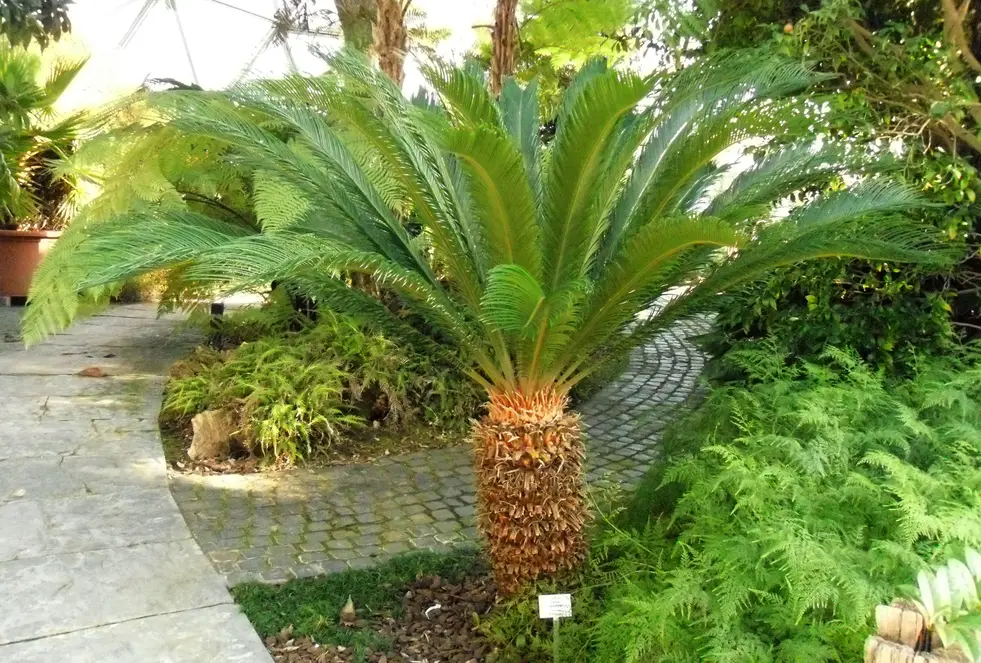
Returning to the endangered plants, mentioning the sago palm, false palm, or cica is necessary, as this Japanese plant is also known.
Cycas revoluta is an almost threatened plant because it requires specific care and cannot stand the cold. In addition, it is toxic and can be poisonous if ingested.
It is often used as a houseplant without knowing its high toxicity level.
See Related: Easy Plant Propagation Techniques to Start Today
9. Dracaena Draco
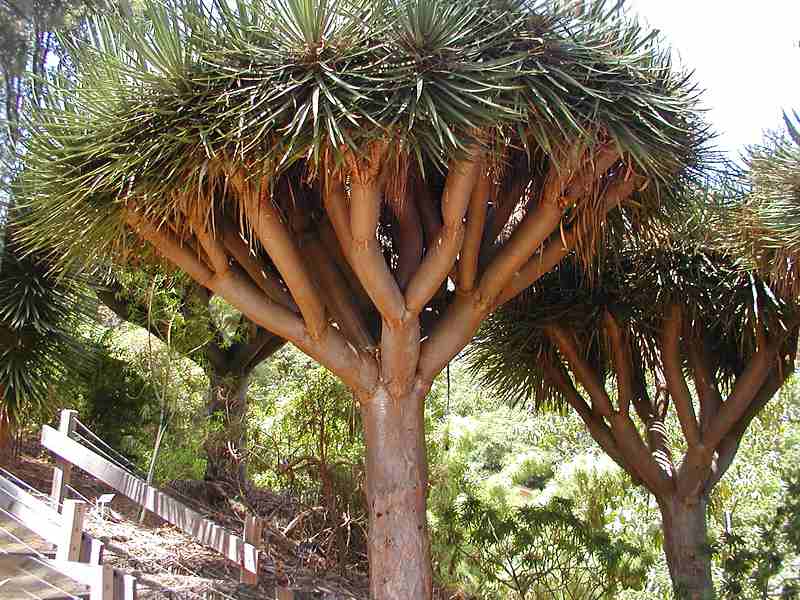
Another plant in danger of extinction is the Dracaena Draco or Drago. This endangered plant species is a symbol of the island of Tenerife, where you can find one of the most important specimens in the world. Its life span ranges between 500 and 600 years.
Although it also grows in Morocco, it is one of the plants in danger of extinction in Spain.
Its slow growth, rough stem, and white flowers are characteristic features of this common species in wooded areas.
10. The Medusagyne

These endangered plants in the desert are typically known to grow on the island of Mahé in Seychelles.
It is the only species of the genus Medusagyne and receives that name due to the shape of the fruits that grow on it. It was originally believed to be an extinct plant; however, in 1970, some species were found.
Despite this, today, it is part of the flora in danger of extinction due to natural causes since its seeds do not finish germinating naturally.
In addition, climate change has generated alterations in its habitat, such as the humid forests, which are like the endangered plants in the tropical rainforest.
11. Tillandsia Dyeriana

Returning to Ecuador, we find this epiphytic plant that grows in Guayas.
Its orange color makes it a beautiful plant that is, for natural reasons, in critical danger of extinction.
Tillandsia Dyeriana is part of the bromeliad family, and due to its critical situation, it could become one of the extinct plants of the American continent like other endangered plants in Hawaii.
Despite this, the few species of this beautiful flower continue to adorn the Ecuadorian vegetation with its picturesque color.
12. Heliconia Brenneri

There are endangered plants in the rainforest, but there are also several in Ecuador. The next species belongs to the Heliconiaceae family and also grows in Ecuador. Today, it is a vulnerable species that tends to become an endangered plant if the necessary measures are not taken.
Heliconia Brenner grows in the mountains up to 2000 meters above sea level. In Ecuador, this beautiful plant is close to a highway that has become its main enemy, the Limón-Indanza, since its expansion has put it at risk.
13. Heliconia Obscura

Like the endangered plants in Texas, if we continue to discuss the Heliconiaceae family, we must mention this species, which unfortunately also suffers from high vulnerability.
As with Heliconia Brenner, Obscura grows in the humid forests of Ecuador and, in turn, Peru.
Its three subspecies, Obscura fusca, Obscura dichromate, and Obscura obscura, are in danger, which could mean their total disappearance.
14. Trilepisium Gymnandrum

Like the endangered plants in the deciduous forest in the Republic of Seychelles, the next plant in danger of extinction is Trilepisium Gymnasium, which belongs to the genus Trilepisio and the Moraceae family.
This plant species grows in forests and lowlands. Numerous efforts are being made to keep alive the few species of this plant that are still part of the world ecosystem. If successful, the showy green-leaved plant can continue complementing the forests with its striking color.
See Related: Is Silicone in Shampoo Bad for the Environment?
15. Guzmania Lepidota

When you think about striking colors, we must mention this endangered plant in Ecuador, which is no different from the endangered plants in the Amazon rainforest.
Guzmania Iepidota is a plant of the Bromeliaceae family that grows in tropical or subtropical forests. When observing it, we undoubtedly appreciate its majesty.
However, habitat loss has made this beautiful flower a plant species in danger of extinction. Some experts even consider it a possibly extinct plant.
16. The Cactus
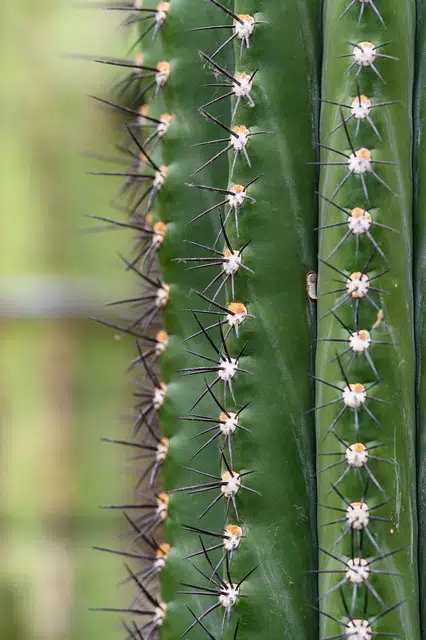
The cactus is one of the most endangered plants and can only be found in the Sonoran desert, in South-central Arizona, and at a single point in Mexico. Its body is grayish-green and covered with pink or brown spines. Its beautiful magenta flower opens from noon to dusk.
17. Sirdavidia Solannona

With the list of endangered plants, we could not leave out the Sirdavidia solannona, a rarity with a narrow trunk reaching up to four or six meters high.
It was discovered in 2013 in the jungles of Gabon, and its only closest relative grows in Tanzania, at a distance of 3,000 kilometers. Its fragility lies in its population, which is scarce.
In addition, pollination is carried out by vibration: the microscopic and very light seeds are disseminated with the ultrasound produced by the wings of bees and other insects.
18. Terminalia Acuminata

Guarajuba, or Terminalia Acuminata as it is known, grows in the forested areas of Rio de Janeiro (Brazil). Although their average height is around 18 meters, some specimens can exceed 100 meters.
Its high-quality wood was widely used in the 20th century to build houses and boats, but the high pressure of logging led to its extinction.
That was believed because several specimens were rediscovered in a forest near Grumari Beach, on the Atlantic. The Botanical Garden of Rio de Janeiro is now working on repopulation.
19. Spiranthes aestivalis

Girl’s Braid, or Spiranthes aestivalis, is an endangered plant and mini-orchid that grows throughout most of Western Europe and North Africa.
In Spain, it can be found in Cuenca, but it often grows near small abandoned populations and is conquered by weeds and weeds.
It is barely the height of a little finger, and its stem is as fine as a reed’s.
They are difficult to locate, but their growth is more compromised because they are threatened by losing their habitats due to deforestation, desertification, and agriculture.
Numerous Spanish and community provisions give it an absolute protection status.
See Related: How Do Sharks Help the Ecosystem?
20. Wollemia Nobilis

Wollemi pine or Wollemia Nobilis is a living fossil because it has existed for more than 90 million years. Yet, it was discovered a few years ago in a remote valley 200 kilometers west of Sydney (Australia).
These endangered plants tend to be highly threatened. This conifer can grow up to 40 meters, and since its discovery, it has been considered the most threatened tree in the world.
No more than 80 specimens have been found in the original valley. To avoid the arrival of curious and sneaky collectors, the scientists made a pact of silence and hid the exact area of its growth.
See Related: Conservation Volunteers
21. Dendrobium Changjiangense
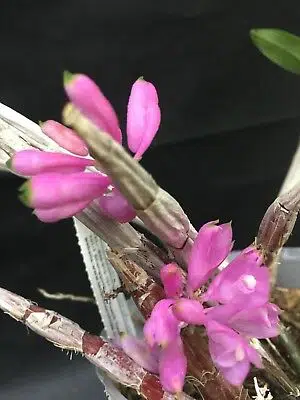
This rare orchid grows in the mountain forests of Hainan, an island in Southwest China. Its flowers are very small, reaching no more than one centimeter.
However, the destruction of their habitat and the furtive collection has led them to appear on the Red List of the IUCN (International Union for Conservation of Nature) as in high danger of extinction.
The orchid is also one of the endangered plants in Florida.
22. Texas prairie dawn ( Hymenoxys Texana )
The Hymenoxys Texana is an endangered species that has long been a symbol of the wild beauty of the American Southwest. Found in only a handful of areas across Texas, this small yellow flower thrives in arid conditions and survives on the limited nutrients provided by the region’s sparse soil.
Despite its endangered status, many individuals are working to protect and preserve this unique plant, recognizing its importance to the local ecosystem and its important role in conservation efforts.
Whether they are monitoring its growth or working hands-on with local populations, these individuals are helping to ensure that future generations can continue to experience and appreciate this beautiful plant.
23. Cirsium Vinaceum (Sacramento Mountains thistle)

The Cirsium Vinaceum, commonly known as the Sacramento Mountains thistle, is a beautiful but endangered plant species. Native to the Sacramento Mountains in New Mexico, this thistle grows at high altitudes and requires specific conditions to thrive.
Unfortunately, where it naturally occurs has been subject to increasing development pressure in recent years. This has led to habitat loss and fragmentation, leaving the Cirsium Vinaceum increasingly vulnerable to extinction. However, there is still hope for this species.
Through conservation efforts, we can help protect its remaining habitat and ensure that future generations can enjoy the beauty of the Sacramento Mountains thistle.
24. Green Pitcher Plant (Sarracenia oreophila)
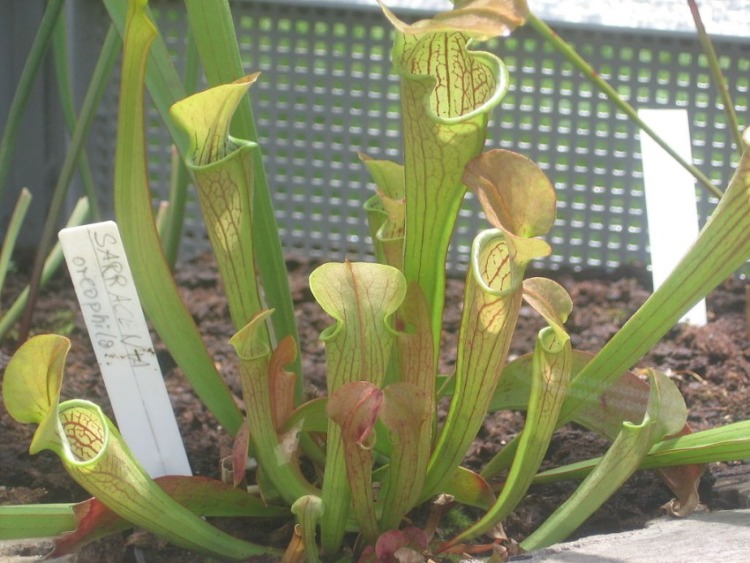
The green pitcher plant is a unique species that is becoming increasingly endangered. Native to North America, this carnivorous plant has long been revered for its impressive ability to trap and digest insects. With its distinctively colored leaves and delicate tendrils, the plant displays nature’s beauty.
Unfortunately, human activities are putting this endangered species at risk. Global warming has altered the habitats where these plants thrive, making it difficult for them to survive and reproduce. Moreover, certain farming practices have contributed to increased soil erosion, further threatening the survival of the green pitcher plant.
25. Pine Hill (Ceanothus roderickii)
The Pine Hill ceanothus (Ceanothus roderickii) is an endangered shrub species in California. Growing up to six feet tall, this evergreen plant is characterized by its small, white flowers and glossy green leaves.
Once prevalent throughout the Sierra Nevada foothills, the Pine Hill ceanothus has been reduced to just a few hundred plants in the wild due to habitat loss and livestock grazing. However, efforts are being made to conserve this species.
The Pine Hill ceanothus is now protected under the Endangered Species Act, and a recovery plan has been implemented to promote its growth and protect its habitat. In addition, seeds from the Pine Hill ceanothus have been collected and planted in restored habitats throughout California. With continued effort, it is hoped that the Pine Hill ceanothus will one day be removed from the endangered species list.
26. Minnesota Dwarf Trout Lily (Erythronium Propullans)

Erythronium Propullans is a rare and endangered species that is found exclusively in the wilds of Northern Minnesota.
Unlike many other types of plants, this humble little flower has adapted to survive and thrive in harsh conditions, making it an important symbol of resilience and sustainability.
Its brilliant yellow petals are surprisingly long-lasting, often persisting long after winter snows have melted away. This hardy plant also plays an important role in nourishing local wildlife.
The wide, sturdy leaves feed deer and rabbits, while the vibrant flowers attract bees and other pollinators.
For these reasons and more, it is a precious treasure that must be protected at all costs. We urge everyone to do their part in safeguarding this endangered plant species for generations to come.
27. North Park (Phacelia Formosula)

Phacelia Formosula is an endangered species of wildflowers native to California. This beautiful flower thrives in rocky and sandy soil, often found along the foothills of the coast range.
With its purple blossoms and delicate, fern-like leaves, Phacelia Formosula is revered for its striking appearance and important role in supporting the local ecosystem. However, due to a number of environmental threats, including habitat loss and invasive species, this plant has become increasingly endangered over the years.
To help protect this species, individuals need to implement sustainable practices that promote biodiversity. By restoring natural habitats and avoiding pesticides or fertilizers on their lawns, individuals can help ensure that future generations can admire this unique and precious flower.
With continued care and conservation efforts, this plant species is expected to thrive long into the future.
28. San Bernardino Mountains (Lesquerella kingii ssp. bernardina)

Lesquerella kingii ssp. Bernardina is an endangered species endemic to the San Bernardino Mountains in California. This subspecies of Lesquerella kingii is a small, annual herb that grows in loose, gravelly soils.
The stems and leaves are covered in a white, waxy coating. The flowers are yellow and cup-shaped. Lesquerella kingii ssp. bernardina is endangered due to its limited range and habitat loss.
This subspecies is only found in San Bernardino, and its habitat is degraded by human activities such as recreation, fire suppression, and grazing. To protect this endangered species, it is important to minimize our impact on its habitat. We can do this by staying on designated trails, avoiding off-trail travel, and refraining from campfires outside developed campsites.
29. Santa Cruz Island fringepod (Thysanocarpus conchuliferus)

The Santa Cruz Island fringepod is a small, endangered plant found only in California. It is endangered due to habitat loss and human degradation.
This plant grows in coastal sage scrub and grassland habitats, which are lost due to urbanization, agriculture, and invasive species. It has pale green leaves and white flowers and is about 6 inches tall.
The Santa Cruz Island fringepod is an important part of the island’s ecosystem. The plant helps to stabilize the soil and provides food for insects and other animals.
30. salt marsh (Cordylanthus maritimus ssp. maritimus)
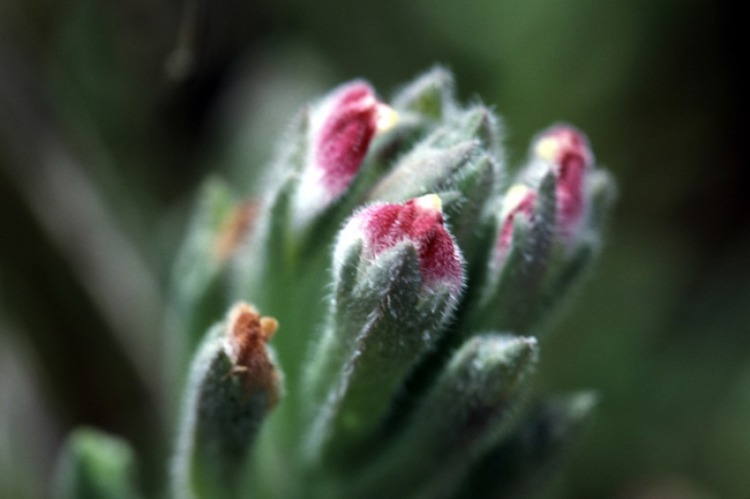
The salt marsh is an endangered species that once thrived along the coastlines of Europe and North America. Today, it is found only in a few isolated pockets, and its future is uncertain.
The salt marsh is a unique ecosystem adapted to survive in the harsh conditions of the tidal zone. Its intricate network of roots and stems helps stabilize the soil, prevent erosion, and provide a habitat for a variety of creatures.
In addition, the salt marsh filters pollutants from the water, making it an essential part of the coastal ecosystem. Despite its importance, the salt marsh is threatened by multiple factors, including pollution, development, and climate change.
We hope you’ve enjoyed reading about the topmost endangered plants worldwide. It is important to be aware of these plants and their endangerment status to help protect them from becoming extinct.
If we all work together, we can ensure these plants will continue to thrive for many years. What do you think? Do you have any ideas on how we can help preserve these amazing plants? Let us know in the comments below!
FAQ
What is the most endangered plant?
The most endangered plant is the Hooded Pitcher Plant in the United States.
Is bamboo endangered?
No, bamboo is not currently considered an endangered species. However, over 1,400 bamboo species are vulnerable or at risk of becoming endangered due to deforestation and climate change.
What are endangered plants in the UK?
Endangered plants in the United Kingdom include the Great Fen orchid, the Devil’s Bit scabious, and the early purple orchid. There are also several types of bamboo that are at risk of becoming endangered due to factors such as deforestation and climate change.
What are endangered plants in India?
Endangered plants in India include the Assam silk cotton tree, the great Indian bustard, and the king cobra. There are also several types of bamboo that are at risk of becoming endangered due to factors such as deforestation and climate change.
Related Resources

